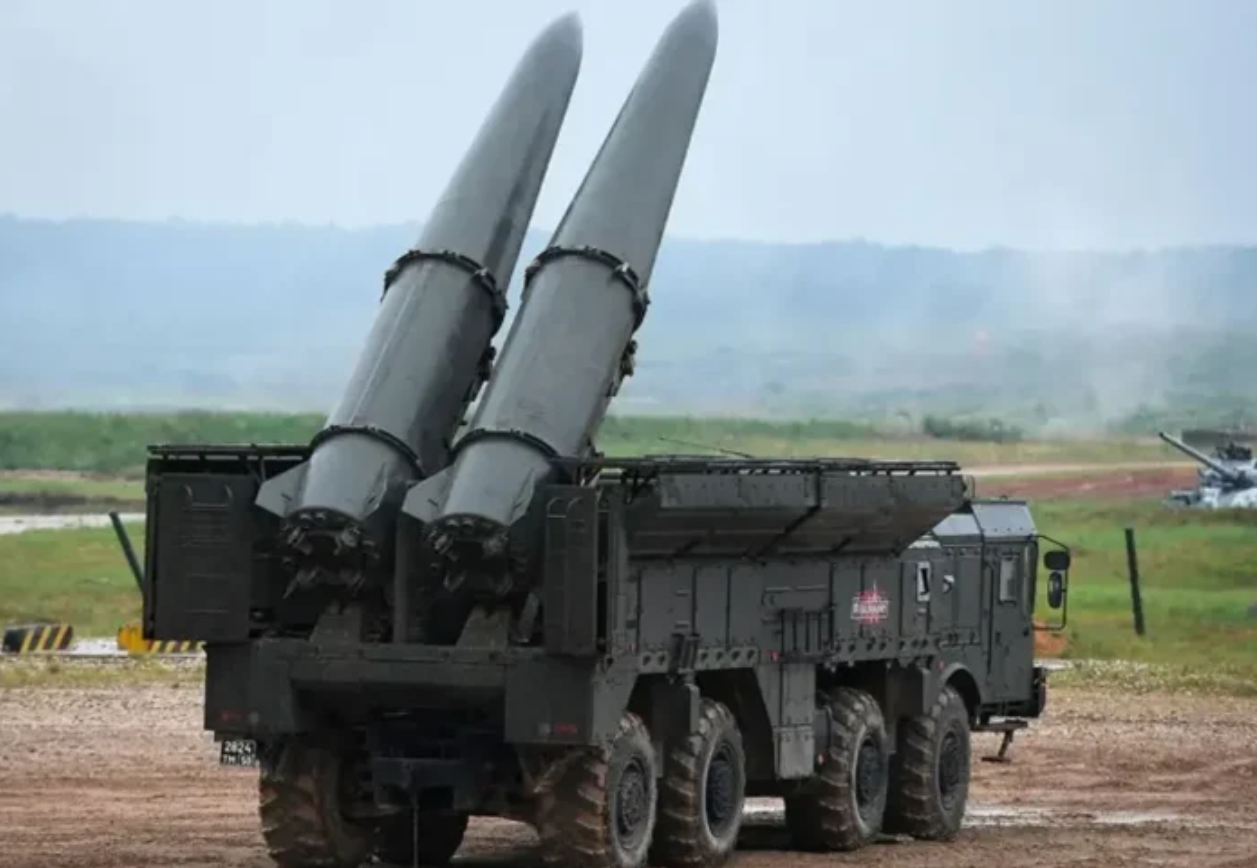Playing nuclear roulette: why Russia canceled the missile moratorium
8 August 10:44
Recently, the Russian Ministry of Foreign Affairs announced that the country no longer considers itself obliged to comply with the moratorium on the deployment of intermediate-range and shorter-range ground-launched missiles.
The Russian Federation officially announced its withdrawal from the voluntary restriction on the deployment of such missiles.
The statement emphasizes that the United States and its allies have not only publicly announced their intention to deploy U.S. intermediate-range and shorter-range missiles in various regions, but have already taken concrete steps in this direction.
The Russian Foreign Ministry also noted that the final decision on the deployment of its own missiles will be made taking into account an interagency analysis of the scale of deployment of Western systems, and will also depend on the overall situation in the field of international security and strategic stability.
Moscow is confused – it was not expecting Washington’s strong rhetoric”
Military analyst Dmitry Snegirev explains in a commentary for "Komersant Ukrainian" that the recent loud statements by the Russian Foreign Ministry about lifting the moratorium on the deployment of medium- and short-range missiles are not a strategic initiative but a reaction to the active policy of the United States.
“It is significant that the Russian side avoided clear responses to the actions of the Americans until the very last moment. This showed its confusion-Moscow did not expect such a sharp change in Washington’s rhetoric,” the expert says.
For decades, Russia has used nuclear rhetoric as a tool to put pressure on the West, but the Obama and Biden administrations avoided direct confrontation. Everything changed after Donald Trump’s statements.
Donald Trump’s words about the US readiness for a nuclear confrontation were a turning point:
“Medvedev was talking about nuclear weapons. When you talk about nuclear weapons, we have to be ready. We are fully prepared,” Trump said.
This came as a shock to the Kremlin. According to Snegiryov, it was after such statements that the United States began active military actions in response to Russian rhetoric.
American nuclear weapons are returning to Britain
According to the UK Defense Journal, the United States has probably already moved B61-12 thermonuclear bombs to RAF Lakenheath in the UK. This information was confirmed by Hans Christensen, director of the Nuclear Information Project of the Federation of American Scientists:
“There is strong evidence that the United States has returned nuclear weapons to the United Kingdom… This is not an easy step,” the analyst said.
At the same time, President Trump confirmed the deployment of American nuclear submarines near the Russian border as a response to Dmitry Medvedev’s nuclear threats. According to Snegirev, this is a classic aikido strategy:
“The Americans have used Medvedev’s rhetoric as a pretext for the actual deployment of weapons. This is a blow with his own words, and Moscow realized it.”
The Kremlin’s first reaction was cautious statements by spokesman Peskov, who emphasized:
“In our country, foreign policy is formulated by President Putin.”
After that, Medvedev’s nuclear rhetoric disappeared. Neither Medvedev nor Putin himself commented on the return of nuclear weapons to Britain or the actions of the US submarines.
Russia “withdraws from the moratorium”, but not for the first time
Instead, Russia announces its withdrawal from the moratorium on intermediate-range and shorter-range missiles. However, according to Dmytro Snegiryov, such a statement was made back in 2024:
“On June 28, 2024, Putin already discussed lifting this moratorium. That is nothing new. It’s more of an attempt to keep a good face on a bad game.”
The analyst recalls that the moratorium de facto expired in 2019, when the United States withdrew from the Intermediate-Range Nuclear Forces Treaty, signed with the USSR in 1987.
Snegiryov draws a parallel with the situation in 2023, when Russia announced the “suspension” of its participation in the Strategic Arms Reduction Treaty (START), but did not legally withdraw from it:
“The concept of ‘suspension’ of participation in an international treaty does not legally exist. This is diplomatic nonsense and Russian newspeak.”
Arms race 2.0: a new strategy of attrition
Snegirev believes that the United States is repeating the successful strategy of the 1980s:
“This is the economic exhaustion of Russia through a new arms race – this is how the USSR was destroyed.”
Back then, under pressure from the US, the Persian Gulf countries increased oil production, and the price of oil fell. Now the United States is once again influencing the oil market: production has been increased to 540 thousand barrels per day, and the price has fallen by $2 per barrel.
According to the Main Intelligence Directorate of the Ukrainian Defense Ministry, Russia plans to spend $1.1 trillion by 2030 on military rearmament. This was stated by the head of the GUR Kirill Budanov.
“I know this document very well. The program costs about 90 trillion rubles. The number one task is to prepare Russia for a war with NATO by 2030,” Budanov said in an interview with Moseychuk.
The main expenditures are planned for the next 5 years. Russia already spends more than 6.6% of GDP on defense, while the budget deficit is 2.2% of GDP, or about $50-60 billion. This is the path to economic collapse, the expert believes.
So, according to Snegirev, the United States is just getting started. They will provoke Russia to further increase defense spending. This is a strategy of attrition. The classic Cold War model: economic pressure, arms race, strategic planning.
The military analyst is convinced that Russia’s current statement is evidence of a miscalculation. It is a reaction, not an initiative. This makes it clear who now has the strategic initiative in this big game.









